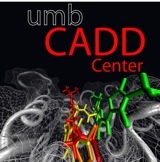Important warning - read this before using CGenFF
- CHARMM version 36 supports CGenFF by default. Version 35 should be compiled with the optional preflx keyword "CGENFF". There is also a patch to add CGenFF support to the CHARMM 34b2 source. If you're planning to compile any CHARMM version older than 36 with CGenFF support, be sure to check out the FAQ!
- The early alpha version of CGenFF that was distributed with c36a had some issues and is now obsolete. Only use the version from this website!
- Never use CGenFF for biological macromolecules. The Protein, Nucleic Acid, Carbohydrate and Lipid force fields are highly optimized for their specific purpose. The general force field is designed to cover any combination of chemical groups. This inevitably comes with a decrease in accuracy for representing any particular subclass of molecules, such as proteins, nucleic acids, carbohydrates and lipids. It is for this reason that we removed the amino acids, nucleotides, etc. from CGenFF. Here is what you should do in order to represent a typical protein-ligand system:
- Make sure you're using the latest CHARMM force field release
- Read in the resulting topology and parameter files as follows:
read rtf card name @TOPPAR/top_all36_prot.rtf
read param card flex name @TOPPAR/par_all36_prot.prm
read rtf card append name @TOPPAR/top_all36_cgenff.rtf
read para card flex append name @TOPPAR/par_all36_cgenff.prm
- (Optional) read in your own stream file:
stream my_ligands.str
|

